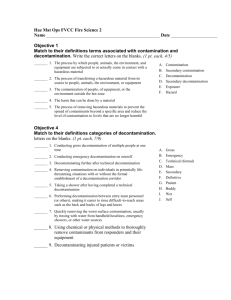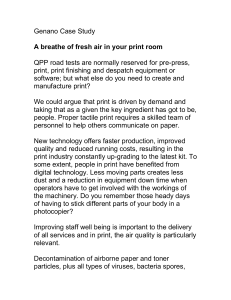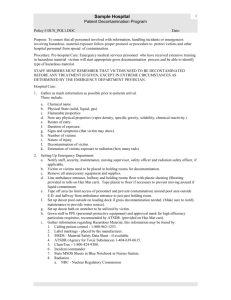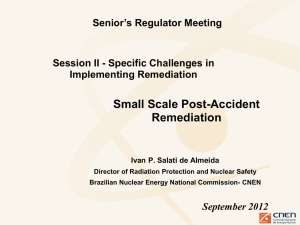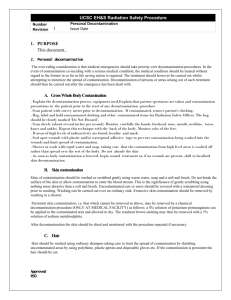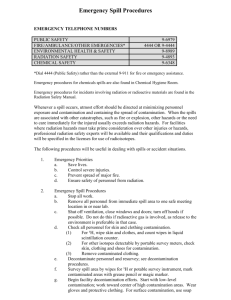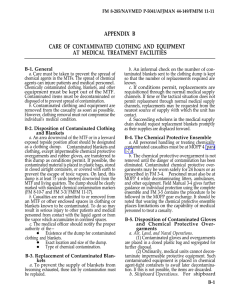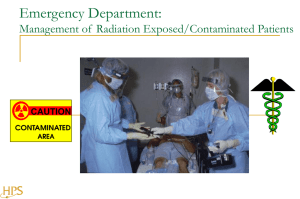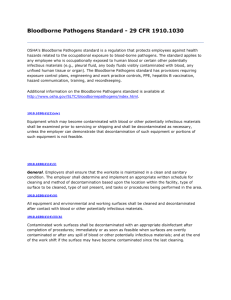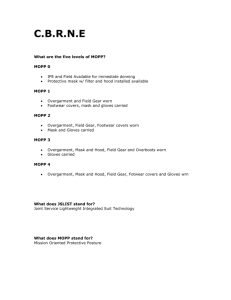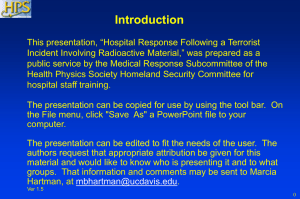04. Decontamination - Radiation Protection of Patients
advertisement
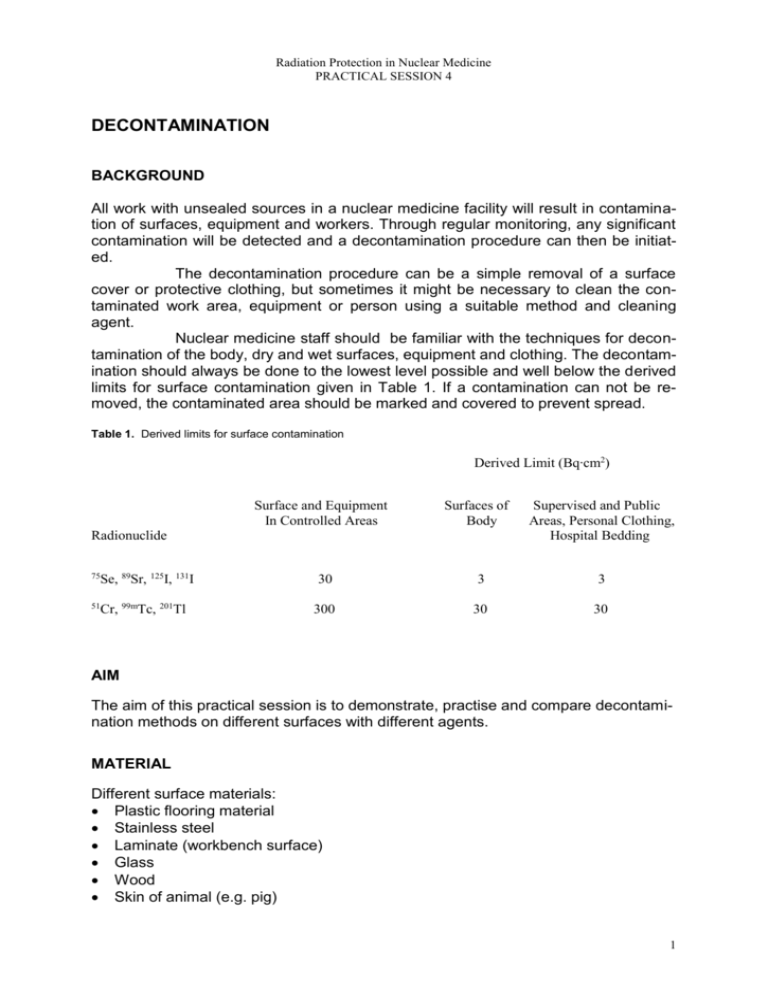
Radiation Protection in Nuclear Medicine PRACTICAL SESSION 4 DECONTAMINATION BACKGROUND All work with unsealed sources in a nuclear medicine facility will result in contamination of surfaces, equipment and workers. Through regular monitoring, any significant contamination will be detected and a decontamination procedure can then be initiated. The decontamination procedure can be a simple removal of a surface cover or protective clothing, but sometimes it might be necessary to clean the contaminated work area, equipment or person using a suitable method and cleaning agent. Nuclear medicine staff should be familiar with the techniques for decontamination of the body, dry and wet surfaces, equipment and clothing. The decontamination should always be done to the lowest level possible and well below the derived limits for surface contamination given in Table 1. If a contamination can not be removed, the contaminated area should be marked and covered to prevent spread. Table 1. Derived limits for surface contamination Derived Limit (Bq∙cm2) Surface and Equipment In Controlled Areas Surfaces of Body Radionuclide Se, 89Sr, 125I, 131I Supervised and Public Areas, Personal Clothing, Hospital Bedding 75 30 3 3 51 300 30 30 Cr, 99mTc, 201Tl AIM The aim of this practical session is to demonstrate, practise and compare decontamination methods on different surfaces with different agents. MATERIAL Different surface materials: Plastic flooring material Stainless steel Laminate (workbench surface) Glass Wood Skin of animal (e.g. pig) 1 Radiation Protection in Nuclear Medicine PRACTICAL SESSION 4 Decontamination agents: Distilled water 70 % ethanol Soap solution Commercial decontamination agent 10 % NaOH Radiopharmaceutical Tc99m-pertechnetate Instrumentation Contamination monitor (measuring count rate) Other equipment Protective clothing (laboratory coat or plastic apron, gloves and overshoes) Tray Paper tissues or swabs Plastic bags Forceps Marker pen PROCEDURE Use protective clothing. Place the surface materials (plates) in the tray. Mark 5 (number of cleaning agents) circular areas on each plate. Make a background measurement. Put about 100 kBq (small volume) of Tc99m-pertechnetate in the middle of each circle and let dry. Measure the count rate. Start cleaning the contaminated area using the different agents, working inwards from the periphery. Make another measurement after the cleaning procedure. Calculate the remaining fraction of activity. Repeat the cleaning procedure. CONCLUSIONS 2 Radiation Protection in Nuclear Medicine PRACTICAL SESSION 4 Decontamination of dry surfaces Detector: Radiopharaceutical: 99mTc-pertechnetate Surface: Surface: Agent: Agent: Background: Background: Number of Measured Net Remaining Number of Measured Net Remaining washings count rate count rate activity washings count rate count rate activity (%) (%) 0 0 1 1 2 2 3 3 4 4 5 5 Surface: Surface: Agent: Agent: Background: Background: Number of Measured Net Remaining Number of Measured Net Remaining washings count rate count rate activity washings count rate count rate activity (%) (%) 0 0 1 1 2 2 3 3 4 4 5 5 3 Radiation Protection in Nuclear Medicine PRACTICAL SESSION 4 Surface: Surface: Agent: Agent: Background: Background: Number of Measured Net Remaining Number of Measured Net Remaining washings count rate count rate activity washings count rate count rate activity (%) (%) 0 0 1 1 2 2 3 3 4 4 5 5 4

